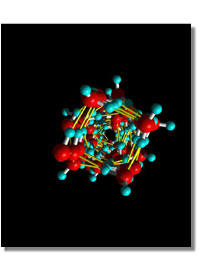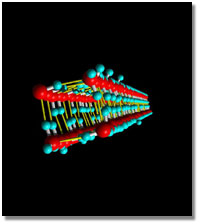 |
|
|
 |
||
|
|||||||||
|
For more information on these science news and feature story tips, please contact the public information officer at the end of each item at (703) 292-8070. Editor: Peter West Contents of this News Tip:
Scientists Predict New Structures for Water Ice
Arecibo Named a Historic Engineering Landmark
Two nationally prominent professional organizations have designated NSF's Arecibo Observatory in Puerto Rico as a landmark in the history of engineering. The American Society of Mechanical Engineers recently named Arecibo a Historical Mechanical Engineering Landmark. The Institute of Electrical and Electronics Engineers named the observatory a Milestone in Electrical Engineering. Joseph Bordogna, NSF's deputy director, accepted the joint honors at the observatory on November 3. The massive radio antenna, which boasts a receiver dish 305 meters (1000 feet) wide, is the world's largest radio astronomy facility. Designed by William Gordon, formerly of Cornell University, its construction and operation led to electrical engineering advances in antenna design, signal processing and electronic instrumentation. In mechanical engineering, Arecibo produced advances in antenna suspension and drive systems. The drive system positions the enormous antenna with millimeter precision. Arecibo has produced discoveries about Earth's ionosphere and astronomical objects such as planets outside of our solar system, pulsars and near-Earth asteroids. [Amber Jones] For more information about Arecibo, see: www.naic.edu MacArthur Foundation Honors NSF ResearchersA chemist, an optical physicist and an astrophysicist who have received support from NSF's Directorate for Mathematical and Physical Sciences were recently awarded MacArthur Foundation Fellowships. The three are among 23 people who earned the $500,000 awards this year from the Chicago-based John D. and Catherine T. MacArthur Foundation. The five-year unrestricted grants - often colloquially called "genius grants" -- are made to those in public science, science, the arts and academia with outstanding track records of talent, creativity and accomplishments. Brooks Pate, a physical chemist at the University of Virginia, advanced the field of high-energy chemistry by overcoming significant technical obstacles to apply spectroscopy techniques to probe the chemical reactions of excited molecules. Optical physicist Lene Hau of Harvard University has examined the interactions between light and matter, including the capacity to control or even stop light. With NSF funding, she has explored the properties of light interacting with a Bose-Einstein condensate, advancing the field of quantum optics. David Spergel of Princeton University, an astrophysicist, has tackled research into the origins, structure and evolution of the universe. His findings have contributed to scientists' understanding of dark matter, galaxies and other large-scale structure in the universe. [Amber Jones]
|
|||||||||
|
|
|


